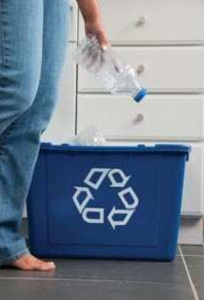 Adopting a green lifestyle has its merits. In addition to benefiting the planet, an eco-friendly lifestyle can save men and women substantial amounts of money. Others are encouraged to adopt eco-friendly habits because of the impact that such lifestyles have on nearby wildlife.
Adopting a green lifestyle has its merits. In addition to benefiting the planet, an eco-friendly lifestyle can save men and women substantial amounts of money. Others are encouraged to adopt eco-friendly habits because of the impact that such lifestyles have on nearby wildlife.
Regardless of what motivates an individual to be more environmentally conscious, adopting such a lifestyle is an effort worthy of praise. But even the most well-intentioned men and women may be making certain mistakes as they attempt to live more eco-friendly lives. The following are some mistakes you may be making as you adapt your lifestyle in an attempt to be more eco-friendly.
· Failure to unplug: Electronic devices tend to be the biggest energy hogs in a home. While you may go room to room turning off devices when a space is unoccupied, unless you actually unplug the device, you are not doing all you can to save energy. Televisions, computers or video game consoles are still consuming electricity even when they have been turned “off,” as clocks and other components still need energy to operate when the devices are turned back on. This phantom load, often referred to as “vampire power,” can consume a considerable amount of energy. Some estimate standby power energy consumption accounts for roughly 10 percent of the electrical energy used in a typical household. Your best bet is to unplug all devices when they’re not in use. One way to make this more convenient is to plug devices into a power strip and then power off the strip when the devices are not being used.
· Discarding biodegradable items: In an effort to be more eco-friendly, some manufacturers have started to package products in what they refer to as biodegradable packaging. Eco-conscious consumers then buy these products and dispose of them in the trash, confident that they will biodegrade in landfills. This works in theory but not necessarily in reality, as many landfills are not constructed in a way that facilitates proper decomposition. In 2001 a group of researchers from the University of Arizona excavated 21 landfills across North America and reported finding hundreds of undecomposed hot dogs, corn starch and lettuce dating back to the 1960s. They also found 2,425 newspapers that were used to date the food. Because some landfills are lined with clay and plastic to prevent leaching into surrounding soil and many also are covered with fresh soil daily to control odor, the buried trash is unable to decompose properly or promptly. These landfills end up preserving the trash rather than helping it to break down. If packaging says biodegradable, bring it to a composting company that will properly break it down.
· Forgetting to weatherproof a home: Many homeowners know to install programmable thermostats to control their home heating and cooling costs. Programmable thermostats are ideal but can be rendered ineffective when you fail to seal up leaks in a home. According to the “Solar Living Sourcebook,” unweatherized homes in the United States leak air at a rate equivalent to having a four-square-foot hole in the wall. Sealing and insulating ducts, insulating the home properly, caulking leaks around doors and windows, and finding any other areas where indoor air can exit a home is essential.
· Poor driving habits: Hybrid cars are a hot commodity, and drivers of such vehicles rightfully feel proud to know they are doing their part to reduce fuel consumption. However, if you drive your hybrid improperly, you may be wasting some of that saved energy. Accelerating quickly and then coming to a quick stop is a recipe for wasting fuel and burning a battery. To conserve fuel, gradual acceleration and deceleration is required. Slowing down may be challenging to get used to, but once you do, you can rest assured you’re saving energy and money.
· Recycling before repurposing: Recycling is a great way to protect the environment, but even recycling consumes a lot of energy. So before you recycle, think about ways you can repurpose things to give them new life. Glass jars and other containers can hold candles, pencils and many other items. Repurposing inspiration can come from anywhere, and the Internet is home to many websites offering ideas on how to repurpose items big and small.
Going green requires some awareness of what you’re doing right and what you may be doing wrong.
